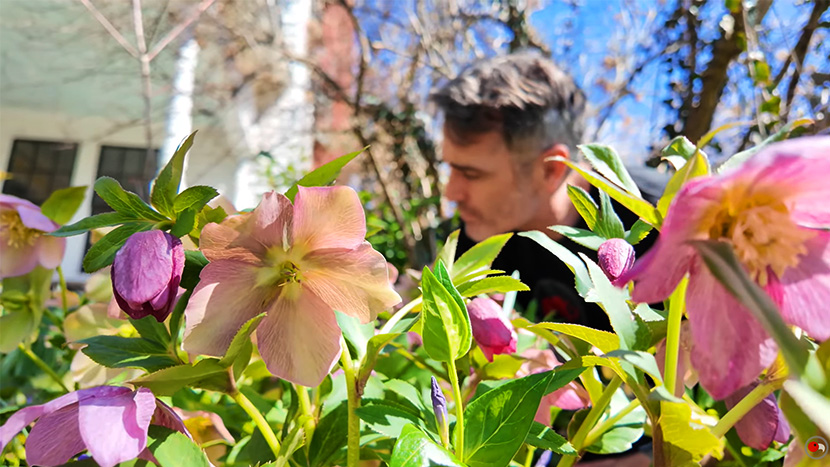Hellebore, a Beautifully Toxic Flower
If you hear that a plant is “toxic” you probably automatically have a negative association with it. However, in the case of the Hellebore plant (Helleborus sp.), a little bit of toxicity can be a good thing.
What is Hellebore?
The Hellebore is native to the Mediterranean and now comes in many varieties and hybrids – so most botanists refer to the plant you find in gardens as H. x hybridus. Hellebore is an evergreen flowering plant that has beautiful flowers in a range of colors – from pink to white, spotted, and even black. They usually have 5 petals but are sometimes double petalled as well. Their flowers are bisexual, meaning that each one has male and female parts on each flower. Some other plants have separate flowers for male and females, called monoecious, and some plants are distinctly male or female – dioecious.
After fertilization, little seed pods will form with a bunch of seeds in them, which is both a blessing and comes with a word of caution that these plants spread easily and quickly. They flower early in spring, or sometimes as early as Christmas, which is what gives them the nicknames “Christmas Rose” or “Lenten Rose” (for lent in March/April). They grow great in the Southern USA, even though they are originally from the Eastern Mediterranean.
Gardeners tend to love them since they stay green, bloom early, and don’t get chewed up by deer and rabbits because of their toxins. In saying this, if you have dogs that like to dig up and eat plants, the hellebore is not the best to have around.
The Toxin in Hellebore
One of the key toxins here is a cardiac glycoside – which could cause your heart to stop in the right amounts. Most people are familiar with this toxin because of foxglove (Digitalis sp.). Overall it is considered mildly toxic, but in general it is safe to have around. Also, like many slightly toxic plants, this toxin could make it useful as a medicinal plant.
Is Hellebore Medicinal?
Used in the right way the toxins in plants can often be used to help to treat many ailments. Historically, the hellebore plant is recorded as being used to treat skin diseases, toothaches, and maybe even to cure deafness (we are mostly sceptical about the last one!). This plant won’t hurt you in small amounts, but like any herbal medicine make sure you are careful and don’t just start taking it without proper research. Most of the time it is best to leave it to the professionals.
Wrap Up
Hellebore is a beautiful and mildly toxic plant from the Mediterranean that produces beautiful flowers and had historical use as a medicinal plant. They reproduce quickly so should be planted with some caution, but can easily be enjoyed by those wanting to add some evergreen shrubs and early spring flowers to their garden.

































































































